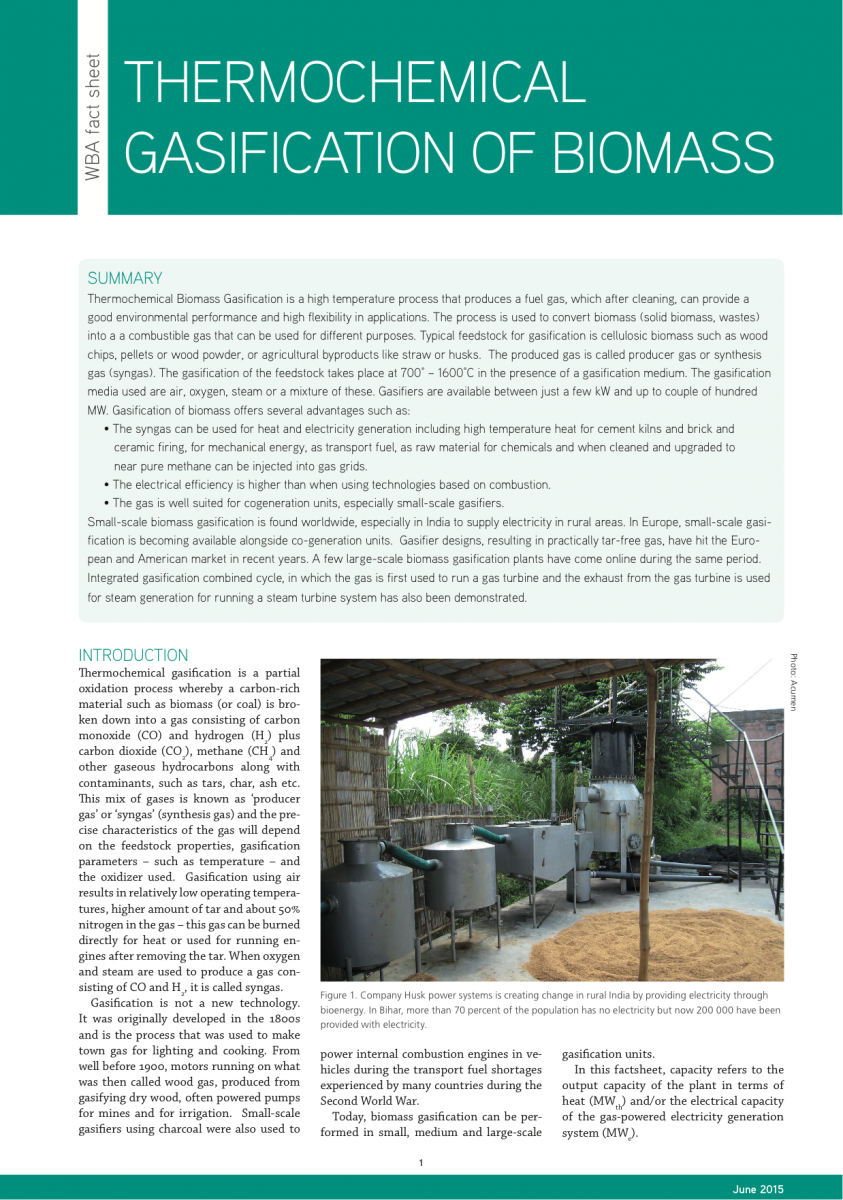Gasification of Biomass
Back to Resources
Published:
2015-06
Summary
Thermochemical Biomass Gasification is a high temperature process that produces a fuel gas, which after cleaning, can provide a good environmental performance and high flexibility in applications. The process is used to convert biomass (solid biomass, wastes) into a a combustible gas that can be used for different purposes. Typical feedstock for gasification is cellulosic biomass such as wood chips, pellets or wood powder, or agricultural byproducts like straw or husks. The produced gas is called producer gas or synthesis gas (syngas). The gasification of the feedstock takes place at 700° – 1600°C in the presence of a gasification medium. The gasification media used are air, oxygen, steam or a mixture of these. Gasifiers are available between just a few kW and up to couple of hundred MW. Gasification of biomass offers several advantages such as:
• The syngas can be used for heat and electricity generation including high temperature heat for cement kilns and brick and ceramic firing, for mechanical energy, as transport fuel, as raw material for chemicals and when cleaned and upgraded to near pure methane can be injected into gas grids.
• The electrical efficiency is higher than when using technologies based on combustion.
• The gas is well suited for cogeneration units, especially small-scale gasifiers.
Small-scale biomass gasification is found worldwide, especially in India to supply electricity in rural areas. In Europe, small-scale gasi- fication is becoming available alongside co-generation units. Gasifier designs, resulting in practically tar-free gas, have hit the Euro- pean and American market in recent years. A few large-scale biomass gasification plants have come online during the same period. Integrated gasification combined cycle, in which the gas is first used to run a gas turbine and the exhaust from the gas turbine is used for steam generation for running a steam turbine system has also been demonstrated.

